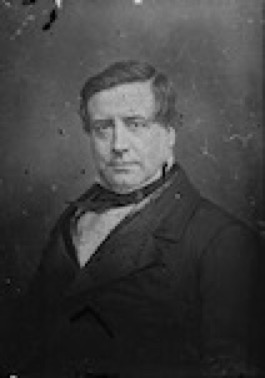Washington Irving
Literary Critique - The Legend of Sleepy Hollow
April/11/2016 03:26 PM Filed: Literary Critiques

Photo Credit: Brady-Handy Collection
(Wikimedia Commons)
Washington Irving and Puritan Tradition
Irving shows the influence of Puritan superstition in “The Legend of Sleepy Hollow,” a story told from an educated man’s standpoint, with foreboding and impending doom. Like ministers of the late 1600s and early 1700s in America, the narrator reveals his outline of unfortunate events lurking on the horizon through a bone-chilling description of setting and visual details. It is possible to feel, even know, the end of this supernatural tale. The tone is negative, predictive of a life spiraling into madness and eventual annihilation.
Although recorded incidents in history, such as the Salem witch trials, were the likely catalyst for Irving’s work in 1819, he needed to create a narrator capable of building the underlying dread that captures attention. Contemporary writers have followed his tradition in paranormal, horror, and Gothic fiction.
Ichabod, an ordinary schoolmaster, can be interpreted as a symbol of a past society filled with disbelief and shock over the psychological control once exercised by the Church. As he courts a young woman and indulges in simple pleasures such as eating, enjoying the sounds and scents around him, he waits for the headless horseman and his ultimate destination. Death.
Like the Church dominated the average man, the threat of the specter on horseback arriving to claim another soul, skulks in the background. When Ichabod loses his girlfriend’s affection, he no longer has reason to rebel against his “destiny” and rides to meet his fate in the night. The protagonist’s quest for danger is a consequence of desolation and depression.
As the headless horseman pursues Ichabod, keeping pace with him in the woods, a calm acceptance instilled by a dread-filled narrator infuses the scene. The decapitated rider hurls his head at Ichabod, knocking him from his horse into the dust. Physical death follows psychological death. Ichabod’s body is never recovered.
Doubt lingers as the story closes. Did Ichabod really die, or did he start a new life elsewhere? Irving may have wished to convey a symbolical end without providing a definitive answer as to whether the nightmare by the brook was real or only a dream conceived in Ichabod’s devastated imagination.